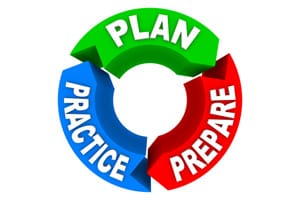NOVEMBER 2020
 As we wrap up harvest, plans are being made for 2021. While we do not hope for any disasters, now is the time to plan for one.
As we wrap up harvest, plans are being made for 2021. While we do not hope for any disasters, now is the time to plan for one.
Shay Foulk is an agronomist, agricultural business and safety consultant, and seed producer in Sparland, IL. He has worked with farmers and agri-businesses to develop and implement safety emergency response plans, conduct in-person safety meetings, and provide critical feedback through site evaluations and action plans. Shay Foulk shared insight with UMASH about how to get started, inspired by his time and experience in the military and as a farmer and agribusiness owner himself.
As harvest winds down, the real work begins. As you take time to work on your business.. be sure to cut out some time for safety planning. You know there are changes that need to be made and things that need to be addressed. Don’t wait!
Taking time during planning season to plan for an emergency or disaster is proactive and may pay in the long run.
Shay emphasized this point, “It is easy to be reactive after an accident or farm safety incident occurs. Anyone who has been involved in an accident or lost someone due to an accident will tell you, don’t wait until something happens to address a problem or prepare your farm to prevent an accident!”
Agriculture can be busy, risky, and economically uncertain. This is all the more reason to invest in planning and preparedness, as emphasized by Shay:
“One of the hardest parts of safety adoption in agriculture is it is hard to justify the time or money spent on implementing safety standards for your farm or business because, if it is done well, you may never know the accidents it prevented! It is our responsibility to put the safety CULTURE back in agriCULTURE, and we can all accomplish this through prevention, being proactive, and implementing our plans.”
Get started with free resources:
- Farm Safety Check: Emergency Preparedness
UMASH - Emergency Preparedness on Dairies
South Dakota State University Extension - Preparing for Livestock Emergencies
University of Minnesota Extension - Community Animal Disaster Planning Toolkit
Colorado State University Extension
Interested in Connecting with Shay Foulk?
Email Shay at agronguy@gmail.com for examples of emergency response sheets, simple blueprints, and field location tracking and information sharing. He is available for speaking events, emergency response meetings, and site walk-thrus and evaluations, or for insight on implementing these practices for your group or team!
